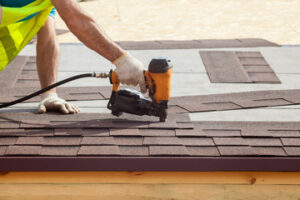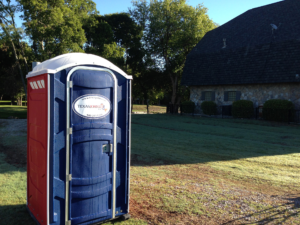Proper lawn care isn’t just about cutting grass and watering occasionally. Controlling weeds, fertilizing correctly, aerating regularly and overseeding can make your turf stronger, healthier and more resilient to environmental stresses.

A soil test can help you understand what your soil is made of—sand, clay, organic matter, etc. It will also reveal its fertility, salt levels and pH level. Get professional help from PristineCutsLawnCare today.
If you want a lush, beautiful lawn that is strong and healthy enough to resist damage from weather and traffic, it’s important to fertilize. Fertilizing helps replace the nutrients that are lost from the grass when it grows and it also encourages new growth, which keeps weeds at bay.
There are many different types of lawn fertilizers, so you need to choose the right one for your needs. A good place to start is by choosing a slow-release fertilizer that will provide your turf with its necessary nutrients over a longer period of time. These types of fertilizers are better for the long-term health of your grass and are also less likely to burn it than quick-release or synthetic options.
You’ll want to apply your fertilizer according to the instructions on the label. In general, it’s best to do so in the early morning before the dew dries, as this will help prevent burning from the sun’s heat. If you can’t fertilize at this time of day, try to do it in the evening after the sun goes down.
The most important nutrients for your grass are nitrogen, phosphorous and potassium. You can find these in many commercial fertilizers, but you can also use compost or other organic material to fertilize your yard. If you’re using organic fertilizers, make sure they’re safe for pets and children before applying them.
In addition to the types of fertilizer you’ll need, you’ll also need to know how much to apply. Too little will not be effective, but too much can cause nutrient overload and harm your grass.
To learn how much to apply, you can perform a soil test on your yard’s soil (some home and garden centers will do this for free). The results of the test will give you the information you need to pick out the perfect fertilizer for your lawn.
It’s also a good idea to consider using zero-phosphorus fertilizers when you live in New York. Phosphorus can stunt the growth of plants and run off into water bodies, where it causes algae blooms.
Mow
A healthy lawn requires proper care and attention to ensure its beauty, vitality and sustainability. Lawn care professionals are experienced, knowledgeable and equipped with the right tools to keep your turf thriving. They take a proactive approach to identify potential issues, like pest infestations or nutrient deficiencies and work to address them before they become a problem.
A standard mowing service keeps your property looking neat, but to truly thrive your lawn needs regular care and maintenance. Mowing when conditions are appropriate and at the correct height will encourage dense, healthy turf. Regular mowing also helps to reduce thatch, which can impede grass growth by causing fungus and blocking sunlight and water from reaching the blades and roots.
Professionals are trained to know the best time of day to cut your grass, avoiding over-heating or stressing the plants. They are also experienced in mowing around trees, shrubs and flower beds. In addition, they may offer additional services that are not included in standard mowing, such as:
Weed Control – No one wants weeds in their yard, but it can be hard to get rid of them without damaging the grass. A weed control program can help prevent weeds before they grow and provide regular treatments to kill any weeds that do appear.
Sprinkler System Maintenance – An efficient irrigation system is the key to maintaining a lush, healthy lawn. A regular maintenance schedule checks the sprinklers for any clogs or other problems that can impact your lawn’s health.
Lime Applications – Many lawns need lime to balance soil acidity, so that grass can fully absorb nutrients. Lime is also a great way to improve soil structure, helping it to retain moisture.
Tree and Shrub Care – Your lawn’s trees and shrubs require special care to stay healthy. Lawn care companies will examine the plants for blotches on leaves, damage to trunks and other signs of disease. They will then determine the best treatment for your trees, which is often a deep root feed using a soil injected liquid or granular material.
Unlike landscaping, which creates beautiful outdoor spaces with plants and man-made features, lawn care and maintenance is all about improving the appearance of existing landscape. This includes fertilization, weed control, seeding, aeration and pruning for both lawns and trees.
Weed
A combination of proper cultural control practices and careful use of herbicides is the best approach to controlling weeds in your lawn. Identifying which types of weeds you are dealing with is important, as some require different treatment than others. It’s also important to know whether or not a weed problem is serious enough to warrant weed control measures and what the most appropriate chemical products are, if needed.
If you decide that it’s time to spray a weed killer, first remove anything from the yard that could be contaminated by overspray (children’s toys, garden furniture, etc.). Mix a diluted chemical solution in a dial sprayer attached to a garden hose and begin by spot treating the weeds. Always read and follow the weed killer’s label directions. If you are worried about the chemicals affecting other plants, try spot-treating in the evening or early morning when temperatures are lower and the weeds will be less active.
Grassy weeds such as quackgrass, orchardgrass and creeping bentgrass can be pulled or sprayed with a non-selective herbicide, like glyphosate. Annual weed grasses such as poa annua or annual meadow grass are more difficult to control. They are tougher than weedy broadleaf species and can be more resistant to herbicides.
The root of most weeds is in the soil, so you can prevent their re-growth by improving your lawn’s health. This will allow it to compete more effectively with weeds for nutrients and moisture. Mowing the lawn on a weekly or biweekly basis throughout the growing season is one way to encourage grass growth and keep it healthy. Adding organic matter, such as compost, to the soil and aerating it will help improve the soil’s health.
Weeds are more likely to grow where the grass is thin, so reseeding and resodding the lawn may be necessary to eliminate the problem. However, if perfect green lawns aren’t your goal, consider leaving some of the more attractive weeds, such as clover and dandelion, in your lawn. They produce pretty flowers and attract pollinating insects.
Aerate
In addition to fertilization, a lawn needs regular aeration. Soil compaction prevents grasses from receiving the oxygen, water and nutrients they need to thrive. Aeration loosens soil and removes small cylinders of earth (thatch). It’s best to aerate warm-season grasses in early spring or fall, and cool-season grasses in September through November. When done correctly, aeration can make your lawn healthy and beautiful.
Lime Applications
Lawn care services also include lime applications to ensure your soil has the correct pH level for optimum grass health. Your lawn must have a neutral pH of about 7.0 for the nutrients to be absorbed.
Fungicide
There are many lawn diseases that can quickly deteriorate grass health, including dollar spot, leaf spot, red thread, brown patch and summer patch. Preventative fungicide treatments keep these damaging diseases at bay, keeping your lawn healthy and green.
Grub Control
Pests like grubs, beetles and mosquitoes can ruin turf and destroy your home’s curb appeal. Lawn care companies typically offer grub and other pest control treatments to protect your yard from damage and reduce the risk of infestations.
Core Aeration
Aerating your lawn is one of the most effective ways to promote grass growth and maintain a healthy, aesthetically pleasing landscape. When performed properly, this service breaks up thatch and allows for better nutrient absorption. When performed in the right season and weather conditions, aeration can also improve the look of your landscape by filling in thin spots, making your lawn more dense and discouraging weeds and harmful insects.
To get the most benefit from aerating your lawn, it’s best to de-weed and fertilize the week prior to aeration and irrigate the lawn immediately after aeration (if needed). If you have a lot of thatch in your yard, it may be necessary to use a powered thatch rake or power sod cutter in addition to core aeration. If you’re interested in using a professional lawn care service, consider signing up for recurring services that will save you time and money on one-time jobs. You can choose to have services completed monthly, weekly or bi-weekly.








